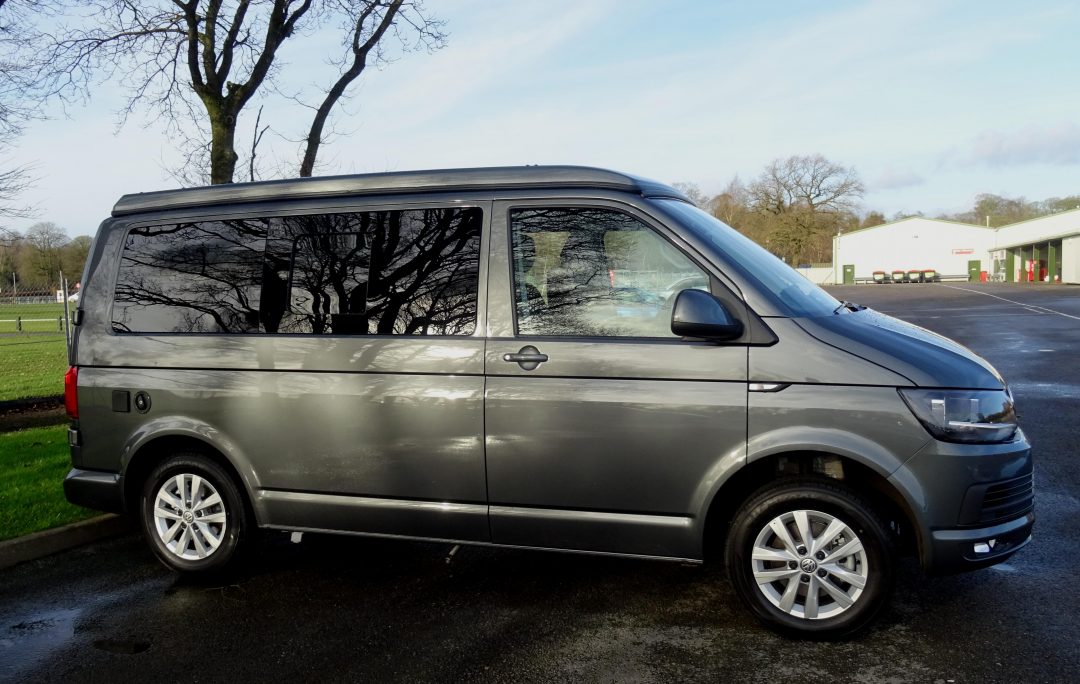Top Tips for Camper Van Winter Storage

How to look after your campervan in winter and what to remember if you’re not using it regularly.
Okay. We get it. You don’t always want to use your campervan when winter comes around. It’s cold. It’s warmer indoors. It’s snowing. We’ve heard every excuse under the sun.
But for those who find themselves parking the van up on the driveway as soon as the mercury starts to drop, winterising your campervan should take place. There are a few crucial things to remember when it comes to storing your campervan in winter, all of which will ensure it is still in tip-top condition the next time you want to use it.
Check out our top 8 tips below for campervan winter storage.
- Drain the water tank
It’s really important to drain down the van’s internal water system before you stop using it. That’s because if water is left in the tank, and it freezes to ice, it can expand and cause cracks in the pipework and therefore your water system will leak the next time you pump water through. And you definitely don’t want that. - Empty the fridge
It may sound obvious, but ensure your fridge (and, of course, cupboards) are empty of all food and drink, not least because you’ll come back to an unrecognisable mess if you forget, but also because you want your fridge smelling fresh and aroma-free the next time you want to pop your milk and eggs in it. And far be it from us to remind you, but you definitely don’t want to attract rodents to your campervan, as they won’t stop just at your leftovers! Prop your fridge door open using the latch to air it while it’s switched off. - Turn off your gas taps
Make sure your on-board gas supply is turned off at the cylinder in the rear gas locker. Run the remaining gas through the grill, hob or oven, and air the van out for a few minutes afterward to dispel the gas. Detach the gas cylinder if required and store it somewhere safe. Turn off your interior gas taps. - Remove any bedding, clothing and soft furnishings
The laundry items you regularly store in the van could become musty and even damp if you don’t remove them for a while. Take them out and give them a good airing before storing them away somewhere dry. - Give it a good wash
A clean van is a happy van. Get the old bucket and sponge out (or a pressure washer, we’re not judgy!) and give the van a thorough once over, cleaning all the paintwork, alloy wheels, and roof to remove as much dirt and road grime as possible. You’ll be grateful for it later, especially if you’re able to cover your van for the period you won’t be using it (see below). Dry the van thoroughly and inspect your work. Just a little bird lime can cause you torrid grief if it’s left to ruin your paintwork. - Cover the van
Vans parked in one location for any great length of time will accumulate grime and get dirty simply from being sat exposed to the elements. If you’re able to, invest in a good bespoke vehicle cover to help keep leaf debris, dirt and water streaks from forming on your van’s paintwork. This will also carry the added benefit of keeping your solar panel in good condition, if you have one. Just remember though, that means it won’t be charging your battery (see below). If it’s not possible to cover it, try to ensure it’s stored away from trees and that you’ve closed all the blinds or curtains, to guard against UV fade of the interior. - Charge the battery
The leisure battery, and the vehicle battery, will need to be maintained if they’re not in regular use or being topped up by a solar panel. So, if you’re planning to winterise your campervan for anything longer than a fortnight, we’d recommend placing the van on charge using the electric hook-up and an adapter to your home’s electrics. Charging the leisure battery this way will also help to pass through a trickle charge to the vehicle battery, keeping both in good order. If left for long periods, minor draw on the vehicle and leisure batteries as well as the ambient conditions can lead to battery sulphation, which in a lot of cases cannot be reversed. - Think of your tyres
It’s not often considered, but if left for long periods of time, tyres can develop flat spots through sitting in contact with the ground. It’s good practice to periodically shift your van’s position if the tyres are likely to be stationary for weeks at a time. Get ’em moving! Wheel covers can also be worth considering as they’ll help prevent UV and weather damage.
If you follow these simple steps you’ll be well on the way to making sure your campervan is ready and in top condition for when you decided to wake it from hibernation.








